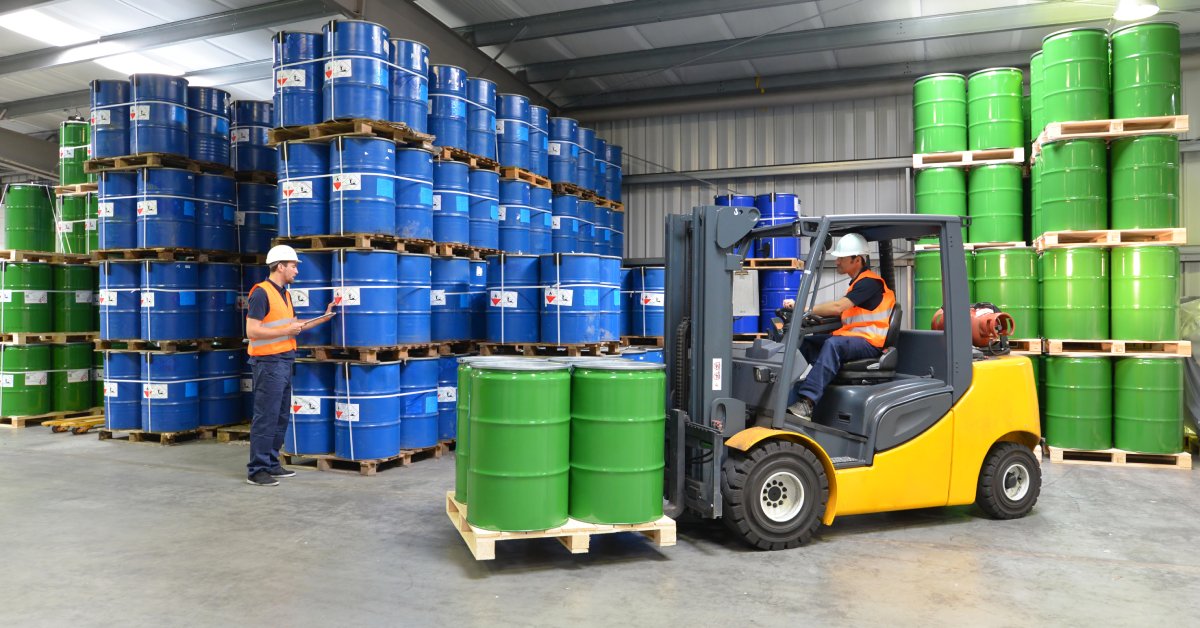The transportation of hazardous materials is a concern of global supply chains, and some of the most critical aspects are safety, compliance, and efficiency. Maintaining strict adherence to safety standards and regulatory requirements is non-negotiable. Among the key factors contributing to this are pallets, which stabilize and support cargo, minimizing risk and ensuring smooth handling throughout the transportation process.
Ensuring Stability and Load Support
The role of pallets in hazardous material transport goes beyond simply organizing cargo—they are essential for securing hazardous materials, protecting people, and safeguarding the environment. Engineers design pallets with stability and load support in mind, allowing the transport of hazardous materials while avoiding spills, leaks, or contamination.
By ensuring that the weight of drums, barrels, or packaged chemicals is evenly distributed, pallets prevent the shifting or tipping of goods, thus reducing the likelihood of accidents. Features such as anti-skid surfaces and reinforced corners further enhance safety by minimizing cargo movement during transit. Additionally, pallets provide an effective platform for stacking multiple containers, helping maximize transport space while adhering to safety protocols.
Adhering to Regulations and Standards
Regulatory compliance is a key driver in hazardous materials transport. Legislation, such as the UN Model Regulations and the US Department of Transportation’s CFR Title 49, imposes strict guidelines for the safe packaging, labeling, and handling of dangerous goods. Pallets designed for hazardous materials can meet these regulations, incorporating features such as flame-retardant materials and heat-treated wooden options to prevent pest infestations during international shipping. These compliance-driven features are essential for businesses that want to avoid fines, reputational damage, and safety incidents.
Durability and Compatibility With Hazardous Materials
Durability and material compatibility are other essential factors in the transportation of hazardous goods. While wood pallets remain a popular choice due to their strength, alternative materials like plastic, aluminum, and composite pallets offer unique advantages.
For example, plastic pallets are non-porous and easy to clean, making them ideal for transporting liquid-based hazardous materials or corrosive substances. Aluminum pallets, on the other hand, offer exceptional fire resistance, making them well-suited for environments where fire hazards are a concern.
Enhancing Safety Through Proper Equipment Compatibility
Finally, the compatibility of pallets with essential equipment, such as forklifts and conveyor belts, ensures that the handling process is efficient and safe. Standardized pallet dimensions enable smooth loading and unloading, reduce the risk of mishandling, and ensure safe transport of hazardous materials.
Choose Excellence for Hazmat Transport
The role of pallets in hazardous material transport is a critical component in ensuring safety, regulatory compliance, and operational efficiency in the logistics process. For businesses seeking to enhance their hazardous materials transportation, choosing the right pallet solutions, with new pallets for sale, is a strategic move that can mitigate risks, promote sustainability, and demonstrate a commitment to industry best practices.
To elevate your hazardous materials supply chain and ensure optimal safety and compliance, contact First Alliance Logistics Management. Our premium pallet solutions and expert logistics support can help streamline your hazardous materials transport and maximize operational success.

